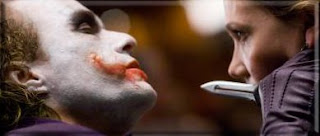(IMPORTANT: This is an old review. No matter how fast you run, it won't be showing at the local cinemas when you get there. You can always get in on DVD though...)
Director Terry George found in the material that inspired “Hotel Rwanda” a perfect excuse to let the inhabitants of ‘the first world’ know about African struggles. This particular story, although sadly real and shockingly human, is just an example of what usually happens in those forgotten areas of the planet.
Whether or not the film fulfils one of its missions (the main one, the director says) of raising people’s consciousness about the situation that the movie shows, “Hotel Rwanda” is a beautiful and touching story properly shot and told.

In general, the actors know how to create intense personalities and give outstanding performances, favoured by the propitious and hopeless war environment.
Don Cheadle plays Paul Rusesabagina, a man who finds out what kind of human being he actually is during the terrible events. His character -a real person, by the way, who did save more than one thousand people from the slaughter that many other suffered- is difficult to separate from the rest of the movie since, in a way, they both are the same thing.
The appropriate choice of shots, containing all that the audience needs to know in order to feel along with the protagonist, undoubtedly helps him. But Don Cheadle’s work amplifies what happens on the screen, widely supported, for his part, by the rest of the cast. This is the case with the seemingly passive Nick Nolte or the awesome Sophie Okonedo, Don Cheadle’s wife in the film.
Apart from the actors, there are some breathtaking moments in which we can barely blink because of the intensity of the emotions that spill out of the screen. Some Don Cheadle’s lines, like the conversation with his wife in the roof or the meaningful speech to his guests, are especially remarkable.
The director counted on a very tasty material at his disposal: war between neighbours, families, brother against brother, the evasive attitude of the rest of the world (“the civilized part”), … But, instead of getting too excited, he wisely handles all these ideas without overusing of ghoulish or bloody resort.
His crew’s choices also achieve an adequate atmosphere, which makes us feel empathy, guilt and responsibility. The light and the music, for example, are appropriately used for this purpose.
Since that’s not my task here, I won’t finish this cold piece of writing trying to tell the reader, in a moral-like way, what they should do after watching the movie (or what we should have done before). I won’t even wonder if Joaquin Phoenix’s words in the movie, speaking about some shots of the conflict that he has shot, are truth: “If people see this footage, they’ll say: ‘Oh, my god, it’s horrible’, and then go on and eat their dinners”.




